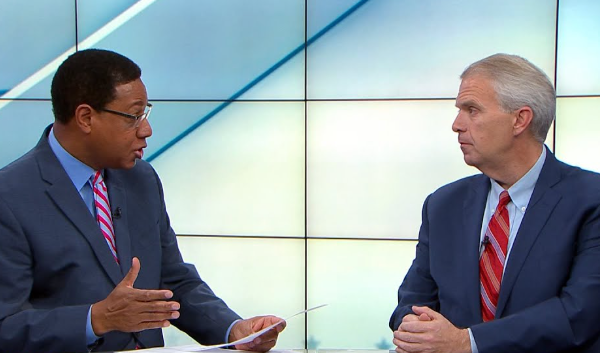It should be simple, right? Thousands of young people get broadcast journalism degrees every year, so why is it so hard for TV news stations to fill producer jobs? Part of the problem is that many students have dreams of anchoring the nightly newscast or working as a sideline reporter for the Super Bowl, but it’s also true that too few schools focus on preparing students for careers in the control room.
Gray Television and Loyola University New Orleans’ School of Mass Communication recently announced the creation of a “Producer Incubator Lab. The idea is to bring producers from Gray Television stations around the nation to Loyola to help coach and educate aspiring producers. Other schools, including the University of Mississippi’s Meek School of Journalism, have special programs designed to give students hands-on producing experience, but t j-schools across the country could certainly be doing more to fill the gap.

Kelly Bryant producing a newscast for WTVA-TV in Tupelo, Mississippi. Photo by Lauren Conley.
In fact, like many small news stations, WTVA-TV in Tupelo, Mississippi had to bypass journalism graduates altogether to find Kelly Bryant. After high school, the Georgia native joined the United States Air Force. Once her service was done, she moved to Mississippi to study forensic chemistry, but fate had other plans. Instead, she got a part-time job at WTVA.
In five years, Bryant worked her way up from master control to working full-time as a newscast producer.
“I have a unique perspective in that I was a director first,” said Bryant. “The timing and being able to see what it takes from a technical standpoint to put a show on the air gives me a whole lot of appreciation as a producer.”
For current students or recent grads who might be interested in producing, Bryant says the skills needed are relatively straightforward.
“A good producer needs to be able to recognize news when they see it and understand how to interpret and present the information to the viewing audience in an appealing way.”
However, Bryant does admit that the job isn’t easy. “It is extremely difficult,” said Bryant. “It is high pressure. There are a number of things that can go wrong from your plan. You must be able to figure out a way around it.”
For those hunting for producer jobs, putting together the right type of resume is essential. Bryant says she created two different kinds of reels.
“I have one that is just a compilation of very short tosses to live shots, anchor intros, and breaking news. I try to keep my compilation reel to about a minute and thirty seconds,” said Bryant. “The second reel was an entire show minus breaks and full weather hits.”
Though Bryant didn’t plan on becoming a producer, she says she loves the challenge.
“Make sure you want to do this,” said Bryant. “It is stressful. It is rewarding. It is a lot of fun.”
Bryant’s full show reel includes everyting but the commercial breaks and extended weather segments.
Story contributed by Deb Wenger, NewsLab editor, and Lauren Conley, a broadcast journalism student in the Meek School of Journalism & New Media at the University of Mississippi. Lauren just spent six weeks learning how to produce newscasts at WTVA as part of a producer internship program at the school.








